The Legend Of Zelda: Breath of the Wild Review

I have to say, it has never been a better time to be a Zelda fan. Last month, the 31 year old series got a facelift it has been long overdue, and the results have been enormous thus far. Even if you’re not a Zelda fan, so long as you’re a gamer, you’ve likely heard about the uproar of praise over this game. The Legend of Zelda: Breath of the Wild, has received near perfect reviews across the board. The likes of GamesRadar, IGN, and Polygon have already given the game perfect scores, and Metacritic also currently features the Switch version of Breath of the Wild ranked 17th in their best games of all time list.
The hype for this game has been legitimately wild (No pun intended), a kind of wild hype that hasn’t truly been seen since The Legend of Zelda: Ocarina of Time took the gaming world by storm with its innovative gameplay mechanics and graphical feats. It is still largely considered one of the most influential, and many would say best, games ever created. The only problem is each new iteration of Zelda since then has followed the OoT formula, and as a result that formula has grown tiresome with overuse. That isn’t to say the games after OoT weren’t good, but the constant reutilization of that formula didn’t break boundaries either. Its success became a crutch for the rest of the series to lean on, and so the mold persisted. Until now…
Forget everything you know about the Zelda series because that formula has largely jumped off a cliff and drowned itself. While I haven’t come close to finishing the game yet (free time is at a premium these days), if the portion I have played is any indication, this new formula is even better than the old one.
By far the most defining theme of The Legend of Zelda: Breath of the Wild is that of exploration; as it should be for any modern open world game. Unlike with previous entries in the series, in Zelda BotW, there are no walls or mountains that prevent you from traversing every square inch of the map. If you see it, chances are you can go to it; something that I’ve tested quite a few times so far, climbing to the tops of tall peaks, towers, and more. Link’s new stamina meter acts as the measure for his physical limits, controlling how far he’ll be able to climb, swim, run, and fly before he fatigues. While some may worry that this limits the supposed freedom of exploration I’m talking about, I like to think of it as part of the challenge in traversing the wild world. Climbing a gargantuan mountain or structure should feel challenging: that way finally reaching the top is an even bigger payoff.
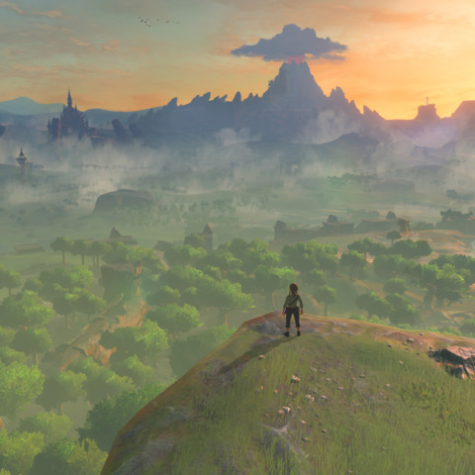
Speaking of payoffs, that is another great aspect about exploration in Breath of The Wild’s overworld. No journey ever seems pointless, or at least that has been the case for me so far playing the game. Whether it’s meeting a Korok (Little woodland creatures who help you upgrade your inventory capacity), finding a treasure chest with a ruby in it, stumbling across a band of enemies, or simply winning a beautiful view of the world around you, a long journey will rarely yield disappointment. One of the discoveries I’m most proud of making (minor spoiler warning) happened at the highest peak of the mountain range bordering Kakariko village. I was near the village elder’s house, looking past it at the roaring waterfalls flooding down the sides of the surrounding cliff wall when my gamer’s sixth sense activated. I knew a mountain that majestic-looking, one directly behind a house with major storyline implications no less, was bound to have something at its peak, and I was right. After finally making it to the top, I came across a stone with a slick katana-like sword struck through its center. Its name was the Eightfold Blade, and it was the strongest sword I had acquired in the game at the time.
Next to the exploration aspect of the game is its emphasis on combat and puzzle solving, two themes that have largely defined the Zelda franchise ever since the original NES title. Breath of the Wild would not be a true Zelda game without featuring both of these prominently. Thankfully, both of these systems do the series justice with the large roles they play in the game.
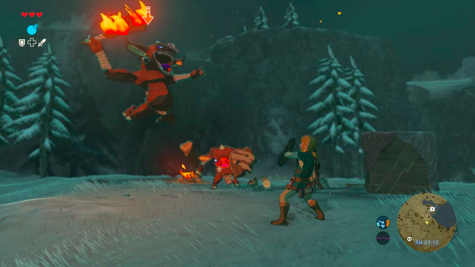 Starting off with combat mechanics, I can honestly say that Breath of the Wild’s system is the best I have seen it in the entire of the series, though not without its faults. Unlike in previous Zeldas, you are not limited simply to the one or two (sometimes 3) swords you find at certain times during the main storyline. Swords, clubs, and spears of various calibers and styles lie scattered throughout the land for you to pick up and use at a moment’s notice. You’ll be picking up a lot of them, by the way, as for the first time ever in the Zelda series, these weapons have finite durability and will eventually break. Which brings me to what I like the least about the new combat system: that durability. I’m fine with the idea itself–weapon durability is not a new mechanic to open-world RPGs–but it could have been executed better in this game’s case. Many of the weapons are too brittle for my comfort, and I often don’t get a chance to accustom myself to their performance before they shatter in Link’s hands mid fight. Otherwise, I’m fine with the combat system as a whole. The diversity of the weapons you can choose from is a welcome sight and while they are all relatively easy to use, the styles are different enough to warrant keeping a wide variety of equipment on you.
Starting off with combat mechanics, I can honestly say that Breath of the Wild’s system is the best I have seen it in the entire of the series, though not without its faults. Unlike in previous Zeldas, you are not limited simply to the one or two (sometimes 3) swords you find at certain times during the main storyline. Swords, clubs, and spears of various calibers and styles lie scattered throughout the land for you to pick up and use at a moment’s notice. You’ll be picking up a lot of them, by the way, as for the first time ever in the Zelda series, these weapons have finite durability and will eventually break. Which brings me to what I like the least about the new combat system: that durability. I’m fine with the idea itself–weapon durability is not a new mechanic to open-world RPGs–but it could have been executed better in this game’s case. Many of the weapons are too brittle for my comfort, and I often don’t get a chance to accustom myself to their performance before they shatter in Link’s hands mid fight. Otherwise, I’m fine with the combat system as a whole. The diversity of the weapons you can choose from is a welcome sight and while they are all relatively easy to use, the styles are different enough to warrant keeping a wide variety of equipment on you.
Puzzle solving is also prevalent throughout the world of Breath of the Wild primarily in 3 forms: Korok puzzles, shrines, and the four main dungeon. I’ve already mentioned the Koroks briefly before, but just to reiterate, these pillow sized woodland creatures are responsible for upgrading your inventory capacity, allowing you room to carry more on your person. Good luck finding all of them without a guide, however: there are 900 total scattered throughout the entirety of Hyrule, each with their own puzzles keeping them hidden from plain sight. Granted, many of the puzzles used to find them are rather basic and also repetitive after a while, that’s bound to happen when you have 900 of anything in a game so I understand it somewhat.
The main dungeons and shrines are far more puzzle-oriented in comparison.
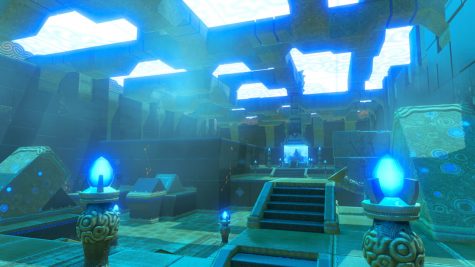
Beginning with the latter, shrines are basically bite-sized dungeons sprinkled throughout the land of Hyrule. There are over 100 of these shrines total, and personally, I like them a whole lot more than the Korok seed puzzles. Each shrine boasts its own unique themes, challenges, and layouts, so I always look forward to finding one. In addition to the puzzles themselves, you can also find a variety of treasures to collect inside, including precious gem stones, rare weapons or gear, and so on. Upon completion, each shrine also awards you with an important item called a Spirit Orb. Once you collect four of these, you will be able to upgrade either your health or stamina at your leisure. On a side note, the shrines also serve a double purpose as fast-travel locations on the map once you have discovered them.
As for the main dungeons, I unfortunately can’t say what I think of them yet since I haven’t gotten to one (again, I haven’t had as much time to play as I would’ve liked). Critiquing them would be pointless, but I can still give a brief overview of what they are like. Each of these dungeons is technically an ancient piece of machinery called a Divine Beast, which are large, animal-shaped vessels created by an ancient race known as the Sheikah. As Link, you are tasked with tracking down these beasts and, in true Shadow of the Colossus style, climbing inside of them to find and defeat the evil lurking within. En route to the boss of the dungeon, you will have to navigate through the gears, cranks, and other various mechanisms blocking your path, which is where the main puzzle solving aspect of the game will come into play. Other than that, I do not know any specifics about the quality of the puzzles themselves.
Exploration. Combat. Puzzle solving. As I’ve said before, Breath of the Wild would not be a true Zelda game without all three of components present, but that is only the framework for what sets Breath of the Wild up to be a successful “Zelda game.” What makes it a monumental game in general is its depth, depth not just in detail but in possibilities as well. Breath of the Wild is so much more than the sum of its parts, and I haven’t even touched on all of them. There’s a robust cooking system, one that you can experiment with for hours of fun just seeing what you can create. There are over 70 side quests to take on that richen not only Link’s pockets, but the game’s lore and story as well. There’s an entire encyclopedia of resources, animals, weapons, and monsters waiting to be filled with the pictures you take on your Sheikah Slate (Link’s first iPad-esque tablet in the series). All of that and more awaits the player right from the moment of Link’s awakening (That’s another Zelda pun, by the way). But what makes Breath of the Wild a great game–I would even say a standard setter for the gaming industry–is the feeling of freedom. Cliché, I know, and I suppose that should be an obvious factor in every open world game, but Breath of the Wild’s idea of freedom is different. There’s not just a lot of empty space to move around, the environment itself pulses with life. It lives and breathes around you, waiting for you to interact with it. Grass blows in the wind, rain makes climbable surfaces slippery, fire spreads as it burns the surrounding plant life, all of it invites you forward to experiment. And experiment you can, very well in fact thanks in good part to an advanced physics engine that allows for it all. The result is an experience unlike anything you will see elsewhere, a wonderful spectacle of fun that every gamer should consider picking up.

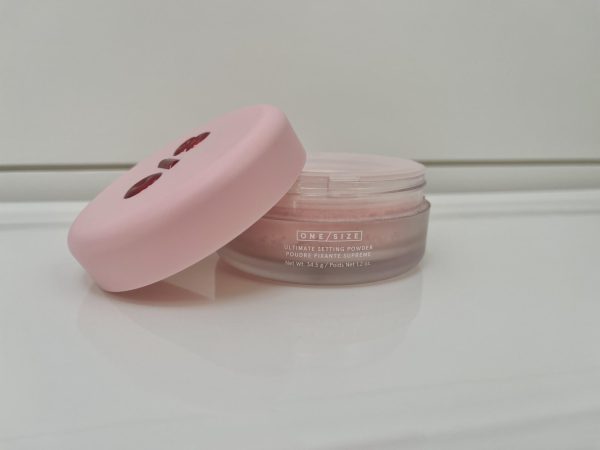

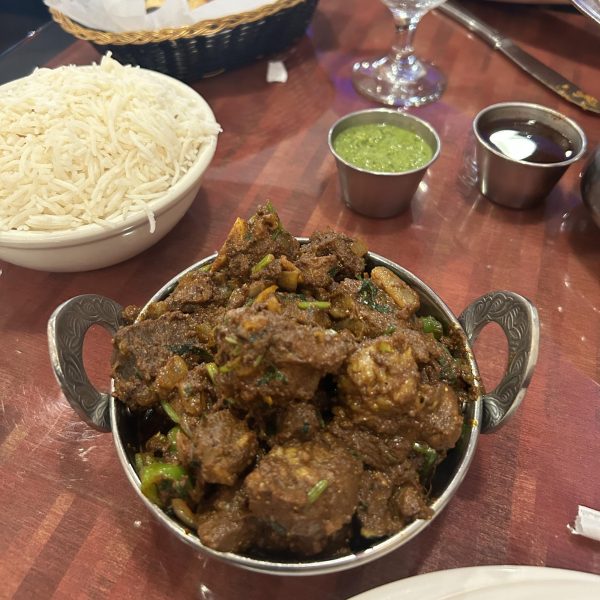

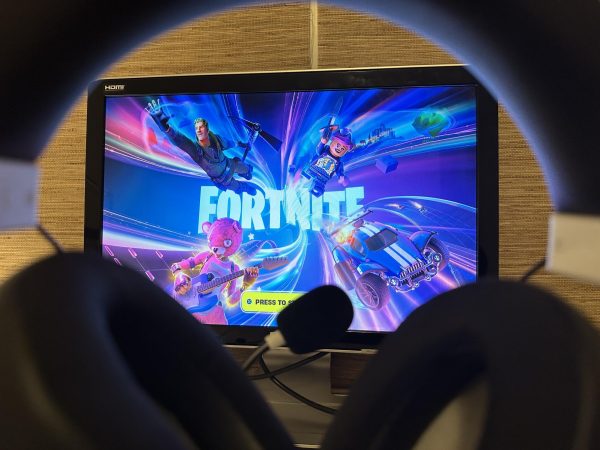



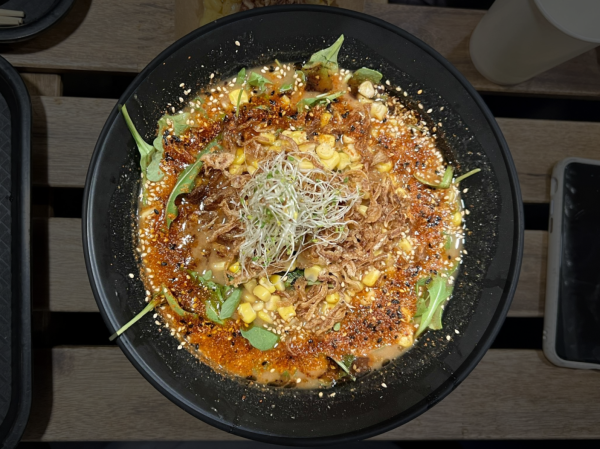




![Spinning into artwork. A member of the clay club throwing clay on a pottery wheel. The wheel is one of the many ways clay club members create their work. We’ve had as many as 40 kids [attending clay club], said Christine Enos.](https://hhspress.org/wp-content/uploads/2023/04/IMG_3278-475x356.jpg)